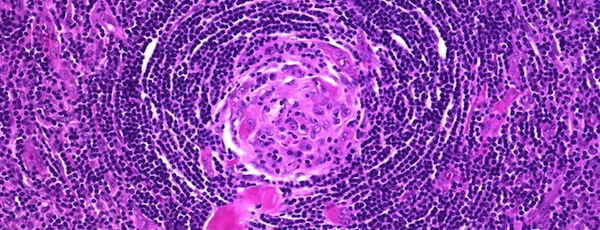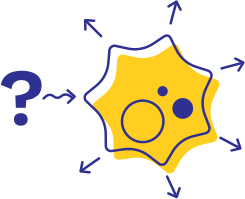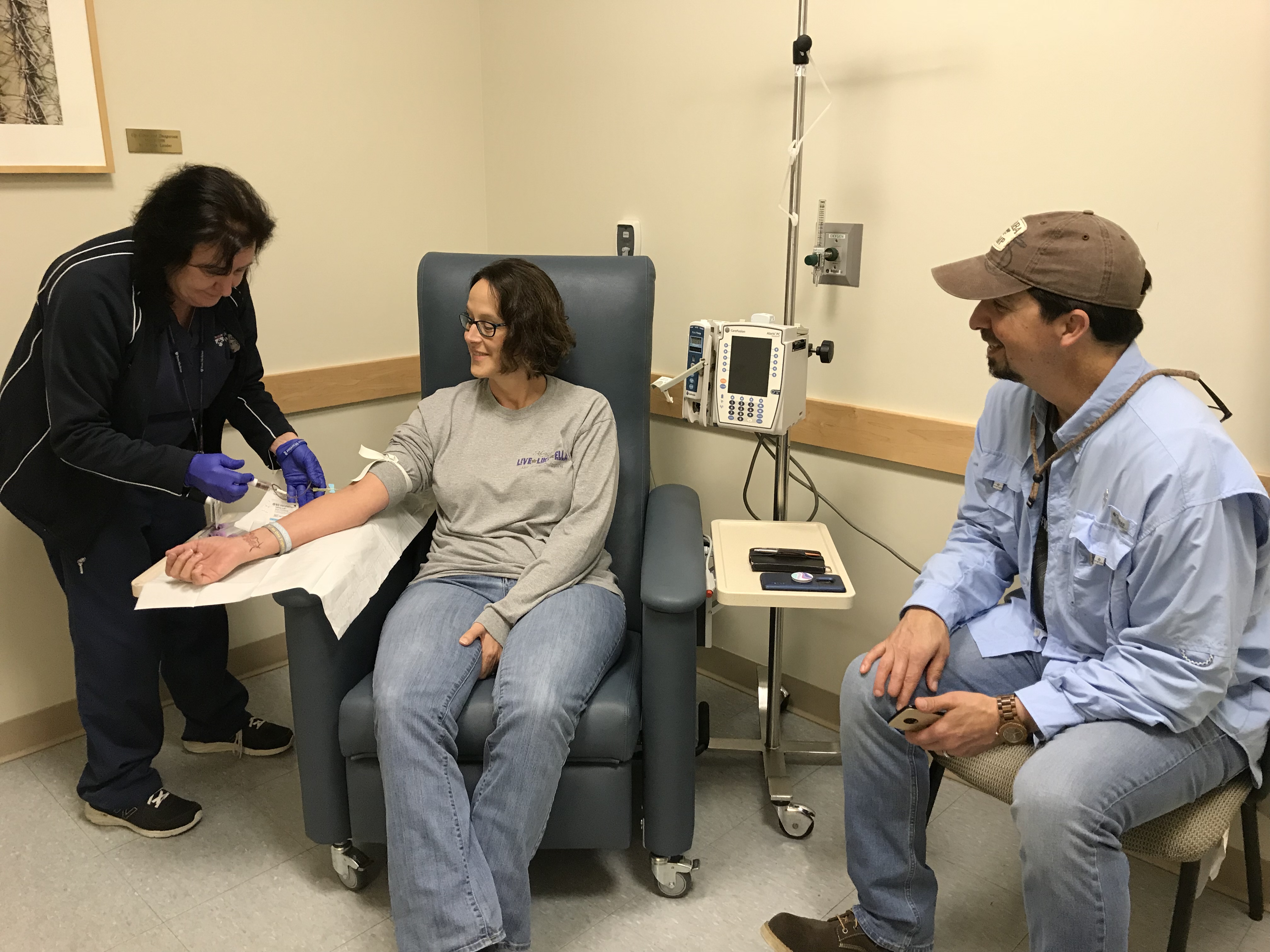
Castleman disease lymph node under the microscope
Castleman disease (CD) is a group of three immune system disorders that share a similar lymph node appearance under the microscope, but have different symptoms, causes, and treatments. The three main subtypes of CD include:
- Unicentric Castleman disease (UCD)
- HHV-8-associated multicentric Castleman disease (HHV-8+MCD)
- HHV-8-negative/idiopathic multicentric Castleman disease (iMCD)
Learn more:
 All cases of unicentric Castleman disease (UCD) and HHV-8-negative multicentric Castleman disease (iMCD) are “idiopathic,” which means that the cause is not known. There are also no known risk factors for UCD or iMCD, though the possibility of a genetic cause is being researched. In HHV-8-associated multicentric Castleman disease, the HHV-8 virus causes and drives the disease.
All cases of unicentric Castleman disease (UCD) and HHV-8-negative multicentric Castleman disease (iMCD) are “idiopathic,” which means that the cause is not known. There are also no known risk factors for UCD or iMCD, though the possibility of a genetic cause is being researched. In HHV-8-associated multicentric Castleman disease, the HHV-8 virus causes and drives the disease. Diagnosis of Castleman disease requires a lymph node biopsy, and each subtype of Castleman disease requires a different treatment.
Diagnosis of Castleman disease requires a lymph node biopsy, and each subtype of Castleman disease requires a different treatment.